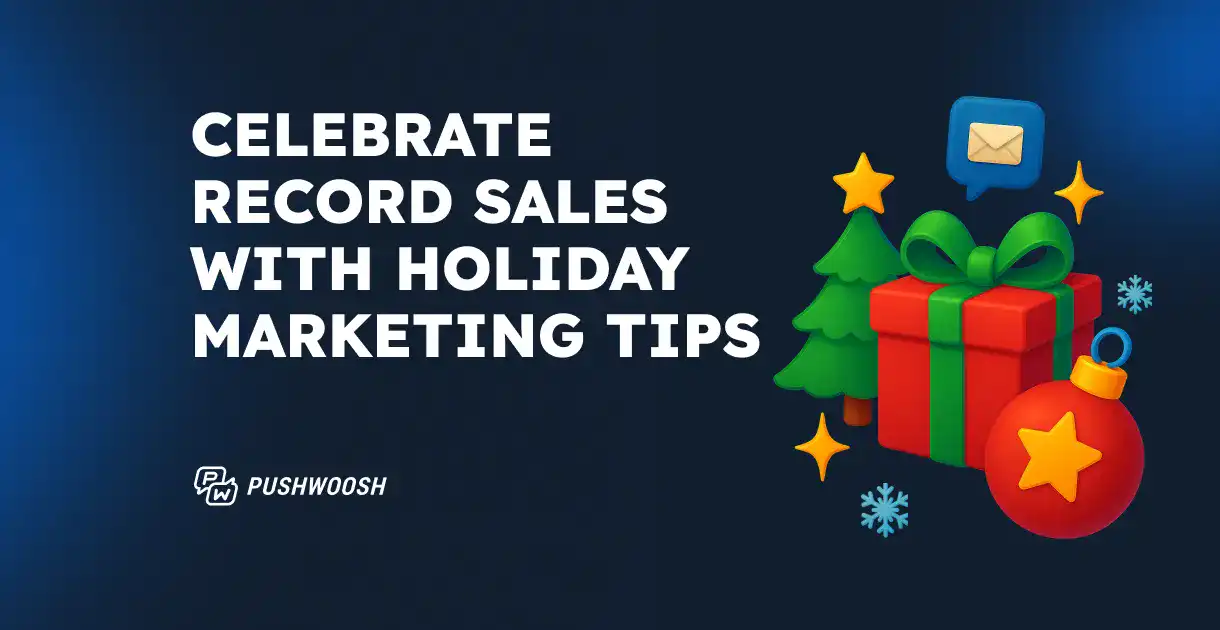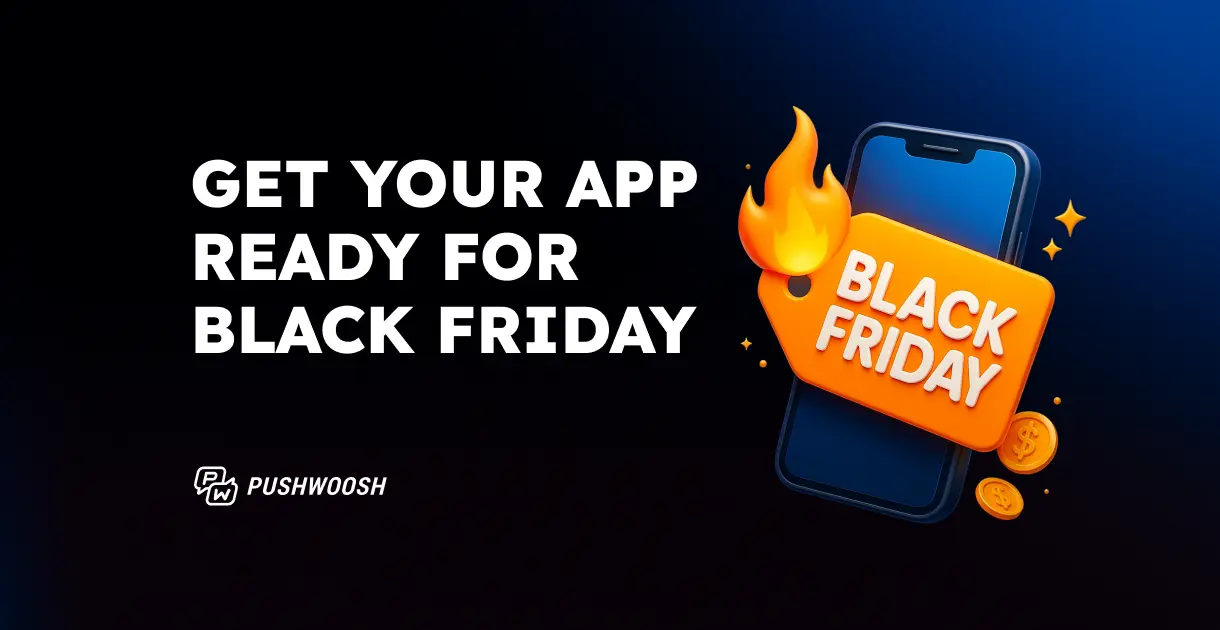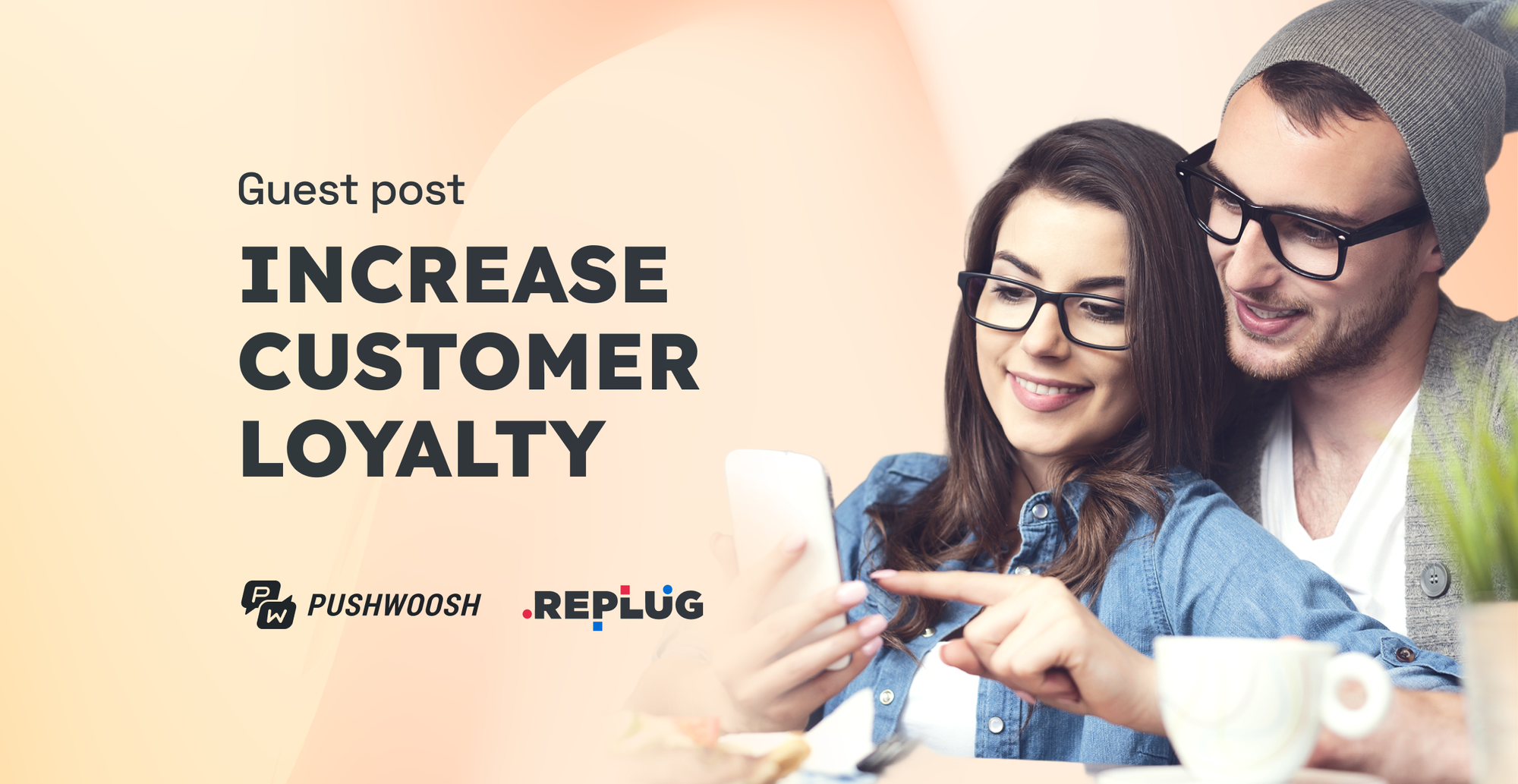User lifetime value: Proven tips to ensure long-term engagement with your mobile app
Would you like your app to be the first thing users open after waking up and the last one they close before going to bed? If so, user lifetime value (LTV) is the marketing metric you’re after. Why? Because it dictates the financial health of your app and helps you build stronger customer relationships.
A high customer lifetime value ensures:
- Increased profitability: Users generate more revenue over time, reducing the need for constant acquisition.
- Better budget allocation: High LTV justifies higher acquisition costs and allows for more aggressive marketing strategies.
- Sustainable growth: Loyal customers contribute to predictable revenue streams, enabling long-term planning and innovation.
Mastering the strategies and tools shared in this guide will help you create an app experience that engages users, retains them, and maximizes their lifetime value.
But first things first.
What is customer lifetime value (CLV)?
A common synonym for user LTV, customer lifetime value (CLV) is a metric that measures the total revenue a business can expect from a single customer throughout their entire relationship. It’s not just about how much a user spends in one transaction—it’s about their cumulative worth over time. As such, the longer you retain a user, the higher the expected profits.
Accurately calculating and leveraging CLV helps app developers balance acquisition and retention while maximizing profitability.
How to calculate customer lifetime value?
Here’s a quick formula for calculating user lifetime value:
LTV = Average Purchase Value × Purchase Frequency × Average Customer Lifespan
For example, imagine a mobile game where the average user:
- Spends $10 per in-app purchase (e.g., buying virtual currency or power-ups).
- Makes 2 purchases per month on average.
- Remains active for 6 months before churning.
**User lifetime value will be calculated as follows:**CLV = $10 × 2 purchases/month × 6 months = $120
This means the average user generates $120 in revenue during their lifetime with the game.
Knowing the CLV can help you set a maximum acquisition cost (e.g., spending up to $30 to acquire a user would still yield a profitable $90 margin) or choose to prioritize existing customer retention strategies like personalized push notifications to increase the lifespan of high-value users.
💡Want to dive deeper? Learn how to improve e-commerce customers’ LTV with actionable insights.
Historical CLV vs predictive CLV
You can estimate your user lifetime value based either on the previous findings (historical) or future forecasts (predictive). Both approaches have their pros and cons, so whichever you choose should depend on the specific needs of your application.
| Historical CLV | Predictive CLV | |
|---|---|---|
| Definition | Total revenue a customer has generated so far. | Expected future revenue a customer will generate. |
| Focus | Looks at past behavior and transactions. | Forecasts future behavior based on trends and patterns. |
| Accuracy | Very accurate as it uses actual data. | Less accurate as it relies on predictions and assumptions. |
| Purpose | Evaluates past performance and customer contributions. | Guides future strategies and resource allocation. |
| Use cases | Reviewing the success of past campaigns. | Identifying high-value future customers for proactive actions. |
Business benefits of betting on high user lifetime value
Customer lifetime value is an essential reflection of your app’s overall success with your target audience.
Save money by focusing on existing customer retention
Retaining existing users is significantly more cost-effective than acquiring new ones. By increasing user lifetime value through retention, you can optimize budget allocation and drive sustainable growth without the need for constant acquisition. This is particularly important for apps with a limited audience.
Identify best customers for targeted efforts
LTV highlights high-value users who generate the most revenue. This insight allows you to tailor marketing, retention, and loyalty efforts to their most profitable segments, ensuring effective resource allocation.
Drive product improvements based on user behavior
By analyzing LTV data, you can identify features that resonate with high-value users and prioritize enhancements. This leads to a better user experience, greater satisfaction, and increased customer retention.
Improve CAC through informed acquisition strategies
Knowing the LTV of different user segments can help you optimize customer acquisition costs (CAC). Investing more in channels that attract high-LTV users ensures a better return on marketing spend.
Measure effectiveness and ROI with actionable data-driven insights
Customer lifetime value serves as a key metric to evaluate the long-term success of marketing and retention campaigns. It provides a clear picture of return on investment, allowing you to refine strategies for better outcomes.
The user lifecycle: From acquisition to retention
As we speak of user lifetime value, it is important to understand the specifics of the user lifecycle. Generally, there are five stages every app user goes through after the install:

But when talking about LTV specifically, you can focus on the core three stages.
Discovery and acquisition: Attract the right users for long-term customer lifetime value
Discovery and acquisition are the entry points of the user lifecycle. Here, it’s important to focus on attracting high-quality users who are likely to engage and convert.
To improve user lifetime value, prioritize channels that drive long-term value, not just high install numbers. Utilize referral programs, targeted ads, and app store optimization (ASO) to connect with users drawn to your app’s core value proposition.
For instance, you can analyze which acquisition sources bring in high-LTV users and adjust onboarding flows accordingly, setting the stage for higher user engagement.
💡Learn how to balance your user acquisition and retention efforts
Pro tip: Apply attribution data in user retention campaigns to increase customer lifetime value!
Attribution is often seen as a tool for tracking installs, but its true power lies in understanding user behavior post-installation. By analyzing attribution data, marketers can identify which acquisition sources bring in high-value users and adjust their strategies accordingly.
With Pushwoosh, you can easily do this by using pre-built integrations with attribution platforms, such as AppsFlyer or Adjust.
User engagement: Turn users into active participants
Engagement is where users transition from passive participants to active contributors to your app’s success. To achieve that, you can deliver personalized experiences, facilitate new feature exploration, and ensure timely communication.
To boost LTV via engagement, create campaigns that highlight key app features or content based on user preferences. Smart push notifications, emails, and in-app messages powered by Pushwoosh can remind users of app benefits, encourage milestone achievements, and promote regular usage.
For example, SPORT1 has achieved an impressive 5 million monthly active users by delivering push notifications and in-app messages tailored to users’ interests. As CTRs soared to 8%, so did their MAU!
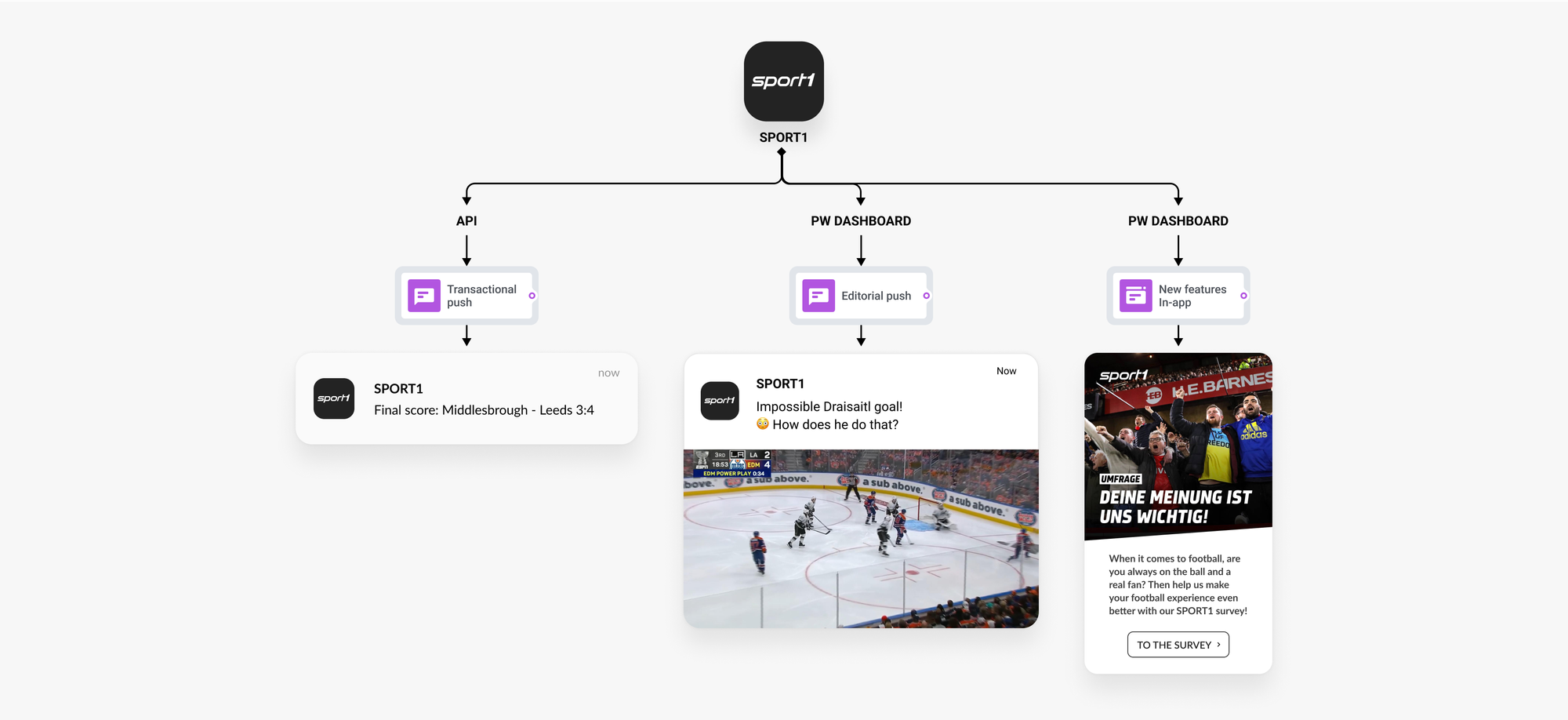
Retention and customer loyalty: Build relationships that last
Customer retention and brand loyalty ensure users continue to engage and may even advocate for your app. After all, sometimes loyal customers make the best advertising!
To maximize LTV with customer loyalty programs, focus on providing consistent value through personalized experiences, exclusive rewards, and responsive customer support.
For example, you can identify your most active users with segmentation and reward their milestones. Events like birthdays, anniversaries, hitting a certain score, or submitting a specific number of orders all present amazing opportunities to celebrate your app users’ successes.
Celebrate customer milestones easily with Pushwoosh
Pro tip: Identify high-value customers with cohort analysis
Cohort analysis allows you to segment users based on behavior patterns over time and identify which groups contribute most to your LTV. In Pushwoosh, you can use the RFM Segmentation tool or your favorite analytics systems integrated with Pushwoosh.
Is LTV the most important metric? Some common challenges with lifetime value
While customer lifetime value is an important metric, it is hardly flawless. This is why it is important to keep some of its limitations in mind when building your next year’s marketing strategy.
It is hard to calculate the real customer lifetime value accurately
Calculating predictive LTV accurately can be challenging, as it relies on assumptions about future user behavior, retention rates, and spending patterns. Any miscalculations can lead to flawed strategies and misallocated resources.
Historical LTV, in turn, estimates data based on your users’ previous interactions with the app, which may not always accurately reflect changing trends.
It is easy to overestimate the significance of long-term revenue
Focusing too heavily on customer lifetime value may suggest that prioritizing long-term profitability is the best course of action, but it often comes at the expense of short-term gains. As a result, you may accidentally neglect users who contribute valuable immediate revenue.
It is hard to predict customer lifespan
Estimating a user’s average lifespan with your app can be speculative, especially for newer apps or industries with volatile trends, such as e-commerce or entertaiment, leading to unreliable LTV metrics.
It is easy to neglect smaller customer segments
An LTV-centric approach may cause businesses to overlook smaller or niche user segments that, while not immediately profitable, could provide significant strategic value.
For example, younger users may not have the financial means to pay for high-tier subscriptions but would still drive value through word-of-mouth referrals, social sharing, or brand advocacy).
Customer lifetime value often requires a resource-heavy optimization
Maximizing LTV often requires significant investment in analytics, personalized marketing, and retention campaigns. Smaller businesses or startups may struggle to afford the tools and expertise needed to fully leverage the metric.
Overspending on acquisition is a common mistake
You might justify high acquisition costs based on projected LTV, but if those projections are inaccurate or if retention efforts fail, the strategy can lead to losses.
LTV often lacks context without complementary metrics
Customer lifetime value alone doesn’t provide a full picture of user behavior or business health. Without metrics like CAC, churn rate, or ARPU, decisions based solely on LTV can be misguided.
Understanding these downsides is crucial to ensure that you approach LTV thoughtfully, complementing it with other metrics and strategies.
Key metrics for increasing the customer lifetime value
Now that we’ve covered the basics of CLV calculations, let’s explore the most important metrics behind your mobile app’s success. After all, there’s always more to your app’s engagement than average purchase value and customer lifespan.
There are three metrics you can’t overlook when optimizing your app’s CLV.
Retention rate: Returning customers
Your retention rate shows how many of your mobile app users return over a specific period.
Why it’s important: High customer retention rates are a leading indicator when it comes to user satisfaction and app stickiness.
How to improve retention rate:
- Familiarize users with your app during a smooth onboarding experience.
- Use personalized push notifications to re-engage users after periods of inactivity.
- Experiment with gamification to keep users coming back.
For example, with Pushwoosh Customer Journey Builder, you can drive higher engagement and retain users beyond Day 30 of their lifecycle.
Churn rate: Lost customers
Your churn rate shows the percentage of users who stop using your app over a given period. For improved CLV, you need to have some churn prevention strategies in place.
Why it’s important: Reducing churn directly increases LTV, as acquiring a new customer can cost anything between 5x and 25x times more than retaining an existing user.
How to prevent churn:
- Use surveys to understand why users leave.
- Automate re-engagement campaigns triggered by user inactivity.
- Offer incentives for returning, like discounts or exclusive content.
Here’s an example of an automated in-app message triggered when a customer is identified as being at risk of churn, built with Pushwoosh:
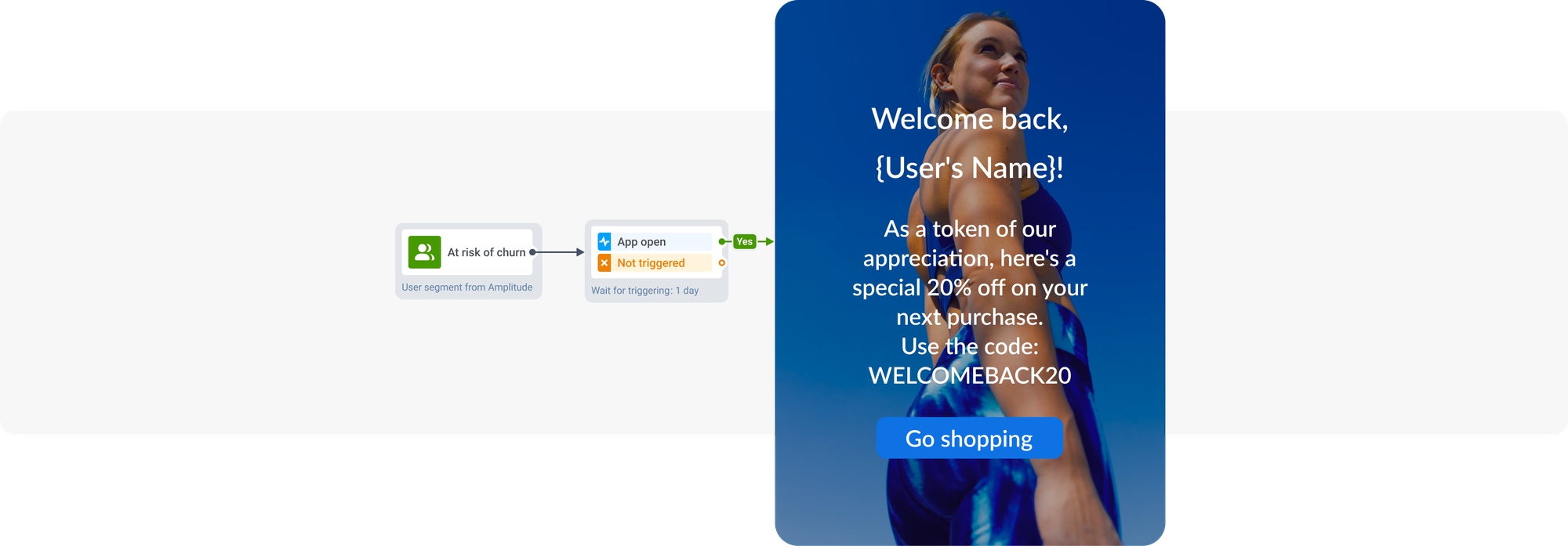
Conversion rate: Free-to-paid customers
The conversion rate showsthe percentage of users who transition from free to paid plans or make a purchase within your mobile app.
Why it’s important: Higher conversion rates mean more revenue per user, directly increasing customer lifetime value.
How to increase your conversion rates:
- Highlight premium benefits during moments of high engagement.
- Offer limited-time discounts or trials to encourage upgrades.
- Personalize offers with user segmentation to refine your conversion strategies.
With Pushwoosh, you can create advanced user segments to achieve high-level granular personalization for maximum effectiveness.
This segment targets users who opened the app 10+ times and completed at least 3 conversions within the last month
Strategies to increase customer lifetime value
There are plenty of approaches you can try to maximize your customers’ lifetime value! Some of the bullet-proof strategies for increasing your LTV include:
1. Identify and optimize key in-app events
Understanding which user actions drive the most value is crucial. Key in-app events, such as purchases, feature usage, and content consumption, are essential for defining a user’s journey within your app.
By tracking and optimizing these moments, you can identify barriers to user progression and implement timely interventions that drive engagement and revenue.
Steps for marketers:
- Identify high-value actions (e.g., purchases, feature use).
- Track where users commonly drop off during critical events.
- Run A/B tests to optimize flows and reduce friction.
**Improve your process with Pushwoosh:**Pushwoosh enables you to trigger contextual notifications based on in-app behavior. For example, a user abandoning their cart could receive a timely reminder or discount offer:
2. Deliver personalized user experiences
You already know about the importance of personalization for increasing customer value and user retention, but what about some advanced personalization strategies?
Steps for marketers:
- Segment users by preferences, demographics, and behavior.
- Use dynamic content to show relevant recommendations across different channels.
- Automate personalized messages at key touchpoints.
Personalize further with Pushwoosh: By leveraging Pushwoosh, you can deliver tailored content and recommendations based on user behavior. Our platform supports personalization for mobile and web pushes, in-app messages, emails, and SMS with Liquid templates.
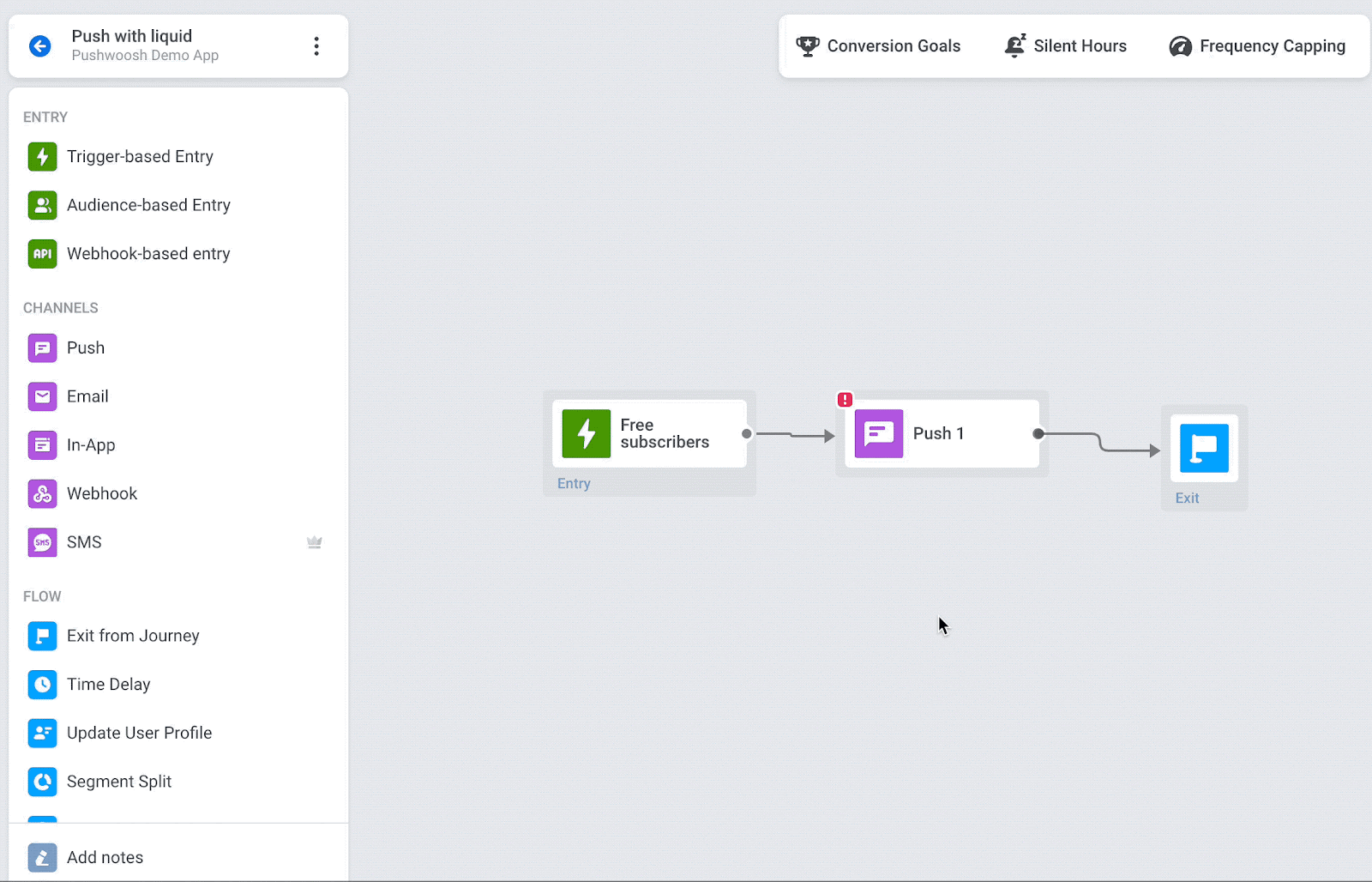
3. Run effective user retention campaigns
Retention campaigns are the lifeline of user engagement, ensuring your app stays relevant and valuable over time. Timely communication—whether through push notifications, emails, or SMS—brings back users before they churn.
Steps for marketers:
- Identify inactive users using retention analytics.
- Send automated win-back campaigns via the most relevant channel.
- Offer incentives like exclusive content or discounts.
Retain more users with Pushwoosh: Pushwoosh simplifies multichannel campaign management, ensuring timely re-engagement and allowing you to choose the best channel to reach each user.
🌟Using Pushwoosh’s advanced user segmentation techniques, Omada persuaded more than 16% of new users to return to the app the next day after the install.
Making data-driven decisions has never been easier, as Pushwoosh allows you to track the performance of each push notification individually and within campaigns. You can assess open rates, CTRs, and conversions to your campaign goal.
4. Incentivize loyalty
There’s more to brand loyalty programs than birthday discounts, especially when it comes to LTV! Incentivization programs like loyalty rewards, gamification, or exclusive offers can significantly improve user engagement and retention.
These programs capitalize on users’ desire for recognition and rewards, making them more likely to engage consistently.
Steps for marketers:
- Develop a loyalty rewards program.
- Use gamification to reward users for milestones.
- Communicate rewards clearly and regularly.
**Make loyalty incentivization easier with Pushwoosh:**By leveraging Pushwoosh’s advanced event- and attribute-based segmentation, Bantoa personalized their communications to build a loyal customer base. You can select different customer segments and personalize your communications based on special events and in-app achievements for them.
Pushwoosh’s automation makes it an almost seamless process for you, and a special experience for your customers.
5. In-app monetization
Another effective way to increase your users’ LTV is to implement in-app monetization techniques. For example, you could leverage a subscription-based model, promote in-app purchases via push notifications, upsell premium plans to promote special features, or include native apps to optimize your revenue.
Steps for marketers:
- Identify in-app monetization techniques that will resonate with your audience the most.
- Make sure the strategies are personalized for each user’s in-app experience.
- Maximize LTV by rotating different appropriate strategies.
Increase your LTV with a comprehensive mobile marketing stack
To support the user lifecycle and maximize your customer lifetime value, you need a marketing stack that ties all user data and touchpoints together.
In the end, improving user engagement and retention really comes down to making well-informed decisions. So, you need to make sure your marketing stack enables you to drive correct conclusions from your customers’ experience with your app.
For example, your stack could include tools for:
- Attribution and analytics;
- Customer engagement;
- User segmentation;
- Cohort analysis;
- Monetization;
- Loyalty and gamification;
- Predictive analytics;
- Survey and customer feedback.
But, let’s be honest, nobody wants to have 10+ different solutions for such an elusive metric. So, instead, your best bet would be to find a platform that combines as many of these as possible in a single solution.
As a customer engagement platform, Pushwoosh allows you to build a strong connection with users to maximize their lifetime value, engaging and retaining them, at least, until the first conversion (to justify user acquisition expenses) and, ideally, drive repeat purchases and long-term subscriptions to maximize the lifetime value.
We also feature multiple integrations with attribution, analytics, survey, and loyalty solutions to help you get more out of a single platform at once.
So what are you waiting for?
See Pushwoosh in action—request a personal demo today!







